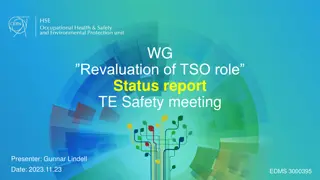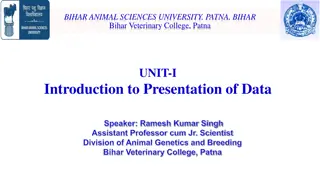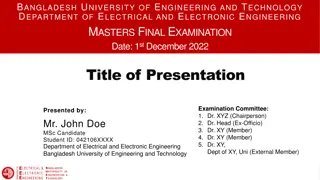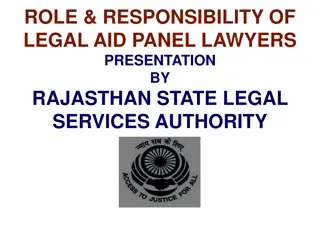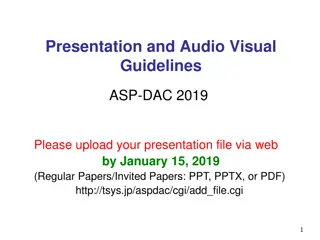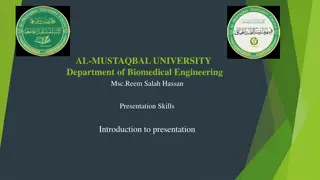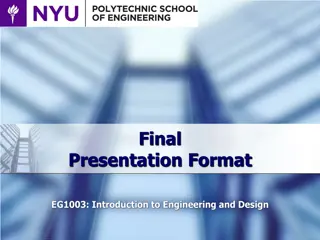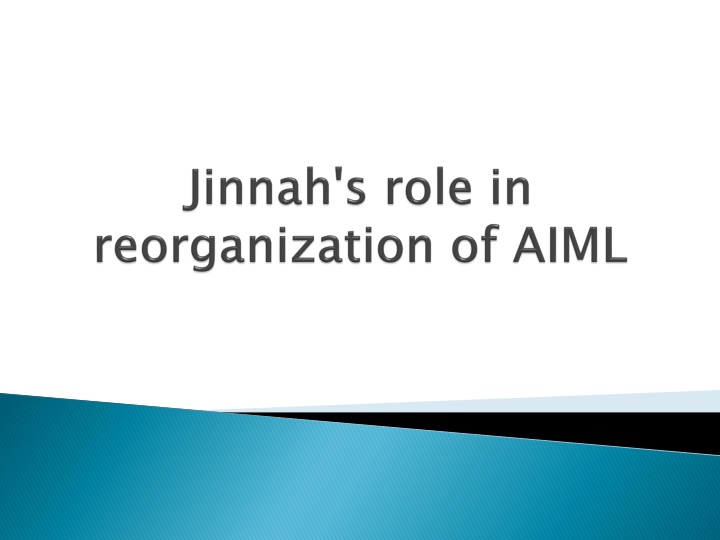
Origins of Nationalism and the Evolution of Muslim League in India
Explore the historical journey of nationalism in India, how it influenced the formation of political parties like the AIC and AIML, and the role of key figures like Jinnah in uniting Muslims. Learn about the changing creed of the AIML and its pursuit for independence. Witness the transformation from a united India concept to the Two Nation Theory.
Download Presentation

Please find below an Image/Link to download the presentation.
The content on the website is provided AS IS for your information and personal use only. It may not be sold, licensed, or shared on other websites without obtaining consent from the author. If you encounter any issues during the download, it is possible that the publisher has removed the file from their server.
You are allowed to download the files provided on this website for personal or commercial use, subject to the condition that they are used lawfully. All files are the property of their respective owners.
The content on the website is provided AS IS for your information and personal use only. It may not be sold, licensed, or shared on other websites without obtaining consent from the author.
E N D
Presentation Transcript
The phenomenon of nationalism started in the later half of the 19th century. However, it got momentum in the first decade of the 20thcentury. As a result, the Hindus and the Muslims realized the significance of their communities and both the nations developed an attitude of hostility towards each other. Both the Hindus and the Muslims formed their political parties such asAIC andAlML respectively, to safeguard their rights. However unlike the AIC, the AIML proved ineffective and unproductive initially due to its structural disorganization and disunity among the Muslim leaders. The politics of league was more drawing room politics. It was need of the time urgently to recognize the party in order to safeguard the rights of the Muslims of India.
In this dismal situation Jinnah took the initiative to reorganize party according to the circumstance. In the 1st and 2nd decades of the 20th century, Jinnah was in favor of united India. He initially join the AIC not the AIML, on one occasion he said that AIML did not listen to me because it take guidance from the Deputy Commissioner, so he joined the Congress. But later on he joined the AIML and work very hard and tried to unite the Muslims and Hindus on one platform. His effort bore fruit in the form of Lucknow Pack 1916. However in thirties, there occurred paradigmatic shift in the political philosophy, i.e. one nation to two nation theory. Thus he took the burden of responsibility on his own shoulder in 1935 and guided the Muslims in the right direction. He made valuable change in the constitution of the party. He started behaving like a true Muslim nationalist. It was Jinnah who united the Muslims on a single platform and under his effective leadership the Muslims were able to achieve their goal in the form a separate state for them.
Creed Change in ALML: Between 1922 and 1934 the all India Muslim League remained in a weak Position. Firstly, Khilafat Movement affected its ability to work as an effective organization. Secondly it suffered from the crisis of leadership. It had also suffered from the split in 1927 due to the difference of opinion between Muhammad Shafi and Muhammad Ali Jinnah.(Simon Commission) Muslim leaders were aware of that fact and tried to repair the damage done to their organization. Between 1922 and 1937 some efforts were made to improve the constitution of the party Several attempts were made to decide and setting up committees to revise and update the rules but no practical steps were taken during this period. In 1937 the League s aims and objectives underwent significant change. That was the time when India witnessed constitutional and political advancement. In 1935, government agreed to grant India a constitution of self-rule, for the time being, at provincial level. In addition, for the future India was also be granted a constitution based on Indian Federation grant India a constitution with the provision Indian Federation.
Muslim League did not accept the federal part and the future policy of the AIML Shall to establishment in India full independence in the form of federation of free democratic states in which the rights and interests of the Muslims and other minorities are adequately and effectively safeguard in the Constitution. On March 1940 at Lahore, another resolution of AlML was passed which sought the establishment of independent Muslim states where the Muslims were in majority such as the North West and East of India. This too was incorporated as a creed in the Constitution of the AlML by replacing the earlier creed in 1937 which desired the establishment of a federation of Free states.
JINNAHS ROLE IN THE RE-ORGANIZATION OF AIML: Jinnah was returned to India from England in 1935 after self exile of 5 years. For the next four years (1935-39), the AIML, as a political party, made repeated efforts to persuade the Congress to come to grips with the stern realities of the Indian situation and to win the support of the minorities for a united struggle against foreign rule, but all this failed to make any impression on the congress. But Jinnah continues struggle to make ML massive organization, after presentation of the fourteen points by Jinnah, there was little unity. But still The provincial branches had ceased to work. The election results of 1936-37 demonstrated this as most of the successful Muslim candidates remained independent. Various steps were taken thereafter to popularize the ML among the masses. The membership was thrown open to all adult Muslims by paying one rupee annually as subscription, a far cry from Rs.50/- (1908) Quorum for the annual session was reduced from 75 to 50.
The next important step was to unite the Hidayat and Aziz groups of the League. The Hidayat group took the initiative. Its efforts bore fruit and the split ended on 4 March 1934 with a combined council meeting held in New Delhi. While the Aziz group agreed to resign in favor of Jinnah as President and Jinnah was permanent president of AIML in 1934. Thus, Muhammad Ali Jinnah became President and Hidayat secretary. 1st he tried to win over as many members of the splinter groups and parties as possible. 2nd ,he discouraged criticism of other Muslims. Thus, the All Parties Muslim Conference asked its members to join the League. He persuaded Ch. Khaliquzzaman to merge his Muslim Unity Board with the League. The extreme Nationalists such as Maulvi Ahmad Saeed of Jamiat Uliama-i-Hind were also attracted by the unique personality of the Quaid-i-Azam.
No doubt some of his efforts met with failure: Habibur Rahman of the Majilis-i-Anhrar objected at the presence of Mirzais (Ahmades) in the League. He tried to win over Maulana Habib- ur-Rehman of the Ahrar up to as late as 1945. Some of the Nawabs did not accept the League as a mass-party, resigned. Jamiat Ulama-i-Hind drifted towards the Congress (because their terms were not accepted by the League). Some groups were joined the New Muslim provincial League. Jinnah made full use of all opportunities available to him to maintain unity in ML in Bengal joined the League e.g. Majlis of Bengal became a nucleus of the New Muslim Majlis unity in ML in Bengal.
Now the only task before the League; To reorganize the structure of the League. For this reason, the constitution of the League was again amended; the Muslim League s Central Parliamentary Board was established for the purpose of approaching and contesting the elections to the Provincial Legislatures and influencing public opinion.
Jinnah was the President of the Muslim League Parliamentary Board and its members were not less than 35 in numbers. It adopted the following programmed for ensuing elections:- 1.To protect the religious rights of the Muslim. In all matters of purely religions character, due weight shall be given to the opinions of Jamiat- ul-Ulema Hind and the Mujtahids. 2.To make every effort to secure the repeal of all repressive laws. 3.To resist all measures which are detrimental to the interest of India, 4.To reduce the heavy cost of administrative machinery, central and provincial. 5.To nationalize the Indian army and to reduce military expenditure.
To encourage the development of industries. To regulate currency, exchange and prices in the interest of the economic development of the country. To stand for the social, educational and economic uplift of the rural population. To sponsor measures for the relief of agricultural indebtedness. 10 To make elementary education free and compulsory. 11 To protect and promote Urdu language and script. 12 To devise measures for the amelioration of the general political condition of the Muslims. 13 To take steps to reduce the heavy burden of taxation. 14 To create healthy public opinion and general political consciousness throughout the country. A committee was also appointed to supervise the work and organization of the provincial Leagues and to suggest measures to improve it. 6 7 8 9
After the 1936-37 elections, the Congress for instance, Tried to win Muslim members particularly in the Muslim minority provinces. There were Muslim political parties who with string provincial followings wanted to keep power for forming coalitions while remaining members of their own organizations. Such was the case with the Unionists in the Punjab, the Khudai Khidmatgar in the Frontier and the Karishak party in Bengal.
In such problematic situation serious, strong, powerful and urgent need of Muslim unity necessary. 1936 greater efforts were made to bring the leaders and people of the Muslim majority and minority provinces together. Syed Hussain Imam (Bihar) said that there was only one political aim open to Indians and that was to secure freedom. It was tame to unite to achieve this end. In 1936, Jinnah appealed to the nation from the platform of ML: He required all communities that the Congress would never reach the goal which they all desired.
Provincial leaders were invited to tour provinces. For instance, a composite group of seven leaders; from Punjab (3), NWFP (2), Sindh (1) and Baluchistan (1) visited U.P while leaders from C.P., U.P., and Bihar visited Pakistan regions. He mainly wants to get help for propaganda from (a) Students (b) Women (c) Sajjadanasheen. They traveled 8,896 miles and addressed 15 meetings in the Punjab, 22 in NWFP and 26 in Sindh. These visits fostered spirit and feelings belonging to common brotherhood. In this regard Congress rule during 1937-39, therefore, convinced the Muslim that constitutional safeguards were futile and that accommodation with Congress was impossible.
Quaid-i-Azam explained the real nature of the creed of the League. He pointed out the differences between the Hindus and the Muslims were because of the difference in their cultures. He emphasized that the Muslims must unite as a nation and then lives or dies united. We will welcome any co-operation from other organizations if our aims and objects are not threatened. We welcome any positive response from any party. In this connection, Maulana Shaukat Ali stated that all Muslims should unite and decide on one aim and that all should work for that particular aim separately and collectively. Jinnah had come to the conclusion that ML, which had existed for the last 30 years, had come into the field to establish contact with the people, the Muslim masses and other organizations. He urged the Muslims belonging to the different parties in Bengal to accept the League as their only representative organization and to agree to work under the banner of it according to the policy and programmed defined by it. Jinnah further asked the Muslims of all parties to achieve a united front, which would enable them to secure their goal and objectives.
Aims and objects of the League a. The establishment in India of full Independence in the form of a federation of free democratic States in which the rights and interests of the Muslims and other minorities are adequately and effectively safeguarded in the Constitution; b. To promote friendly relations and unity between the Muslims and other communities of India; c. To maintain and strengthen brotherly relations between the Muslims and those of other countries. Aims and objects of the League
Membership of the League 1. Every candidate for membership of a primary branch of the AlML:- must be a Muslim and a resident of British India; Must not be less than 18 years of age; 2. Every candidate shall become a member of a Primary League on a payment of an annual subscription fee of two annas. 3. Annual subscription of members shall expire on the 31st day of December.
Office-Bearers of the All India Muslim League There shall be the Office-Bearers of the All India Muslim League as stated below:- President Honorary Honorary Honorary The President Council different Provincial Muslim Leagues. Secretary, Treasurer, and Joint Secretaries at the Annual Session of the League and shall hold offices for a period of one year No person shall be an office a member of some branch Honorary Secretary Honorary Treasurer Honorary Joint President of League shall be elected every year by the Council from amongst those who have been nominated by Secretary Treasurer Joint Secretaries Secretaries ( (2 2) ) elected every year by the Secretary, Treasurer, and Joint Secretaries shall be elected one year but shall be eligible for reelection. No person shall be an office- -bearer member of some branch of ML. bearer of the ML unless he is
The Council of the All India Muslim League The Council shall consist of 465 members elected by the Provincial Leagues who shall hold office for one year and shall be eligible for re-election. Provincial Leagues shall elect their representatives one month before the Annual Session of the League. The total number of the members of the council shall be allotted to the different provinces as follows:- Delhi 15 United Provinces. 70 Punjab 90 Bombay 30 Sindh 25 Madras 20 N.W.F. Province. 20 British Baluchistan 05 Bengal 100 Bihar 30 Orissa 10 Assam 25 Central Provinces & Berars 20 Ajmere. 05 Total: 465
In case a Provincial League or Leagues fail to elect within the prescribed time, the Council of the ML shall have power to elect members. Every member of the Council shall pay in advance an annual subscription of Rs.6/-. The Working Committee of the League Working Committee of ML consisting of not more than 21 members to be nominated by the President from amongst the members of the Council. Sessions of the League An Annual Session of ML shall and a Special Session of the League may be held at such suitable time and place as the Council of the League may determine. The quorum of the Annual Session of the League as well as of the Special Sessions shall be 100. The Council of League shall act as a Subjects Committee to frame and adopt the resolutions to be put forward at the Annual or Special Sessions of the League with power to the President to nominate additional members not exceeding 15 to act on the subjects committee.
Meetings of the Council at least four meetings of the Council must be held in a year. Special meetings of the Council may also be convened at the written requisition of 15 members of the Council. 30 members shall form the quorum of all meetings of the Council. The Secretary shall, not less than 15 days previous to the ordinary meeting and seven daysprevious to special meetings, issue to each a notice stating the time and place of the meeting. Written opinion of the members of the Council will count as votes at all meetings of the Council. Meeting of the Working Committee Working Committee shall meet as often and as frequently as the President desires. 5 membersshall be for the quorum of all meetings of the Working Committee of the League. All resolutions passed by the Working Committee will be subject to the approval of the Council of the League.
Functions of the Council To elect a President for the Annual Sessions of the League. To collect all information necessary and useful with reference to the objects of the League; To take consider and necessary steps for resolutions passed at the Sessions of ML. To control the expenditure of the funds and appoint Auditors; To appoint Sub-Committees for carrying out its duties and exercising its powers; To affiliate and disaffiliate ML under these rules. To take disciplinary action against its members who violate the decisions of ML. To disaffiliate Provincial Leagues if they refuse or neglect any policy and programmed of ML.
Functions of the Working Committee 1.Check and balance the work of the Council of League. 2.Take necessary steps for giving effect to resolutions passed at a Session of ML. 3.To prepare the Annual Budget and to authorize payments in accordance with it. 4.To employ and dismiss servants; 5.To appoint Sub-Committees for carrying out its duties and its powers; 6.To collect all information necessary and useful with reference to the objects of the League; 7.To perform such other functions which the ML or the Council may empower the Committee to perform. Funds of the Leagues A fund shall be raised and established called Muslim National Fund and all fees, donations, subscriptions or other contributions which the League may from time to time receive and collect and shall be deposited in the name of the ML with the Imperial Bank of India, but in any place in which the Imperial Bank may not have a branch such funds may be deposited with any other Bank at the discretion of the Council. The Honorary Treasurer shall be authorized to operate on the Bank.
Powers and Duties of the Honorary Secretary, Joint Secretaries and the Treasurer The Honorary Secretary shall have the power to appoint, punish, dismiss or grant leave of absence with or without pay to the paid servants of the League subject to the sanction of the Working Committee. The Honorary Secretary in case of emergency and relating to matters not affecting the fundamental principles of the constitution and rules of ML. The resolution passed at such a meeting shall subsequently be laid before an ordinary meeting of the Council for confirmation. The Honorary Joint Secretaries shall assist the Honorary Secretary and perform their duties under his guidance.
General Provisions A Provincial League affiliated by the Council of ML may be disaffiliated after the expiration of one year if the Council is satisfied that it has failed to establish District Leagues in the majority of the districts in the Province. All vacancies arising in the ranks of the office bearers or members of the Council shall be filled up by the Council by election. The constitution of ML shall not be added to amend altered or cancelled except at the Annual Sessions of the League and by a majority of the votes of not less two-thirds of the members present at the Sessions.
Conclusion: Jinnah is the central figure in the Muslim politics which allowed them to meet many of their political objectives. ML provided a forum for the Muslims of India which became popular because it was capable of being highly active and well-organized. The organization of ML, along with its structure, underwent significant development in accordance with its rules and regulations, which were amended from time to time in order to gain popularity. The success of such adaptation can be judged by the fact that in March 1940. It was on the basis of this slogan that the AIML successfully led by the Quaid-i-Azam passed through various stages facing a number of challenges like those of Cripps proposal of 1942, Gandhi- Jinnah talks of 1944, Simla conference of 1945, elections of 1945-46, Cabinet Mission Plan 1946, challenges coming out of the Interim Govt. Finally it made the British and the Congress to come to accept 3rd June plan and ultimately Pakistan was established in August 1947.




